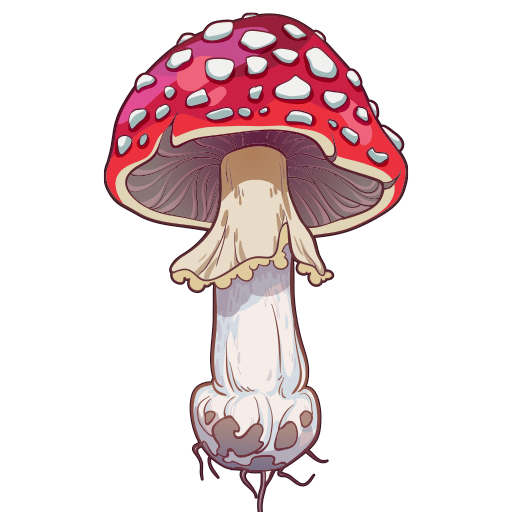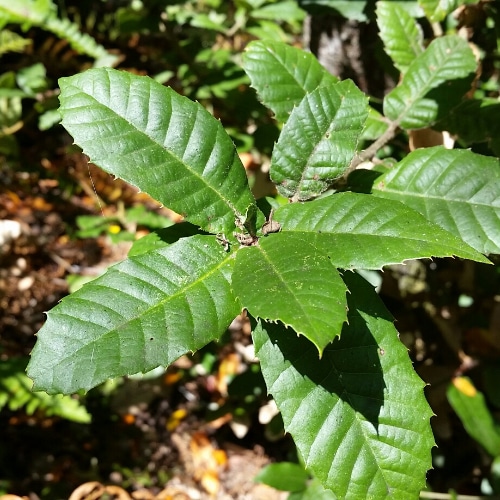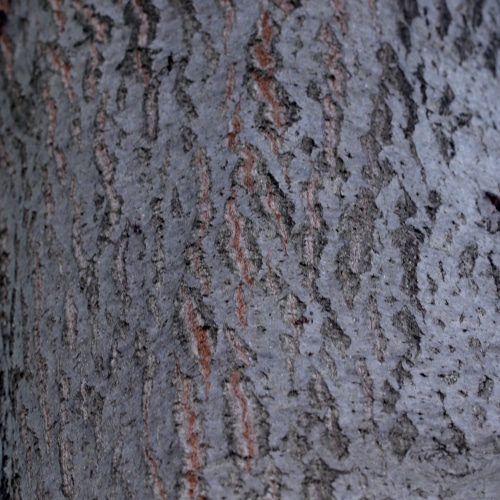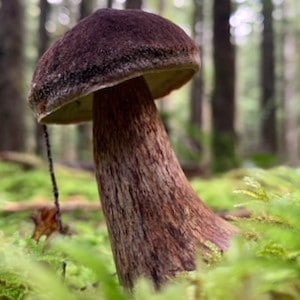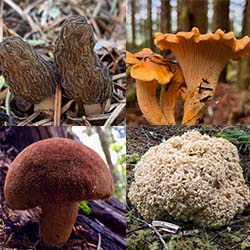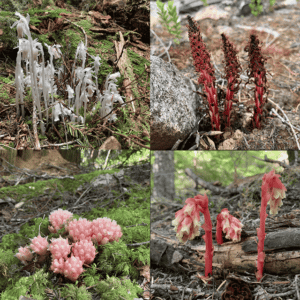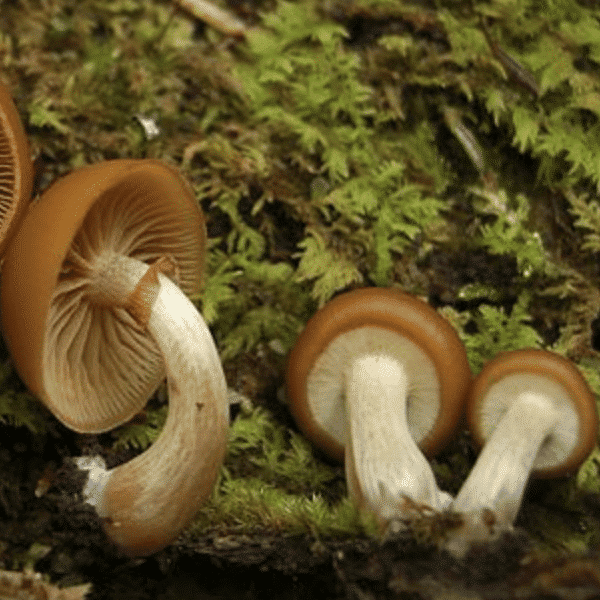Tanoak Notholithocarpus densiflorus
Despite the name, Tanoaks are not true oak trees. In fact, the name is spelled without a space between ‘tan’ and ‘oak’ as to not confuse it with true oaks. Tanoak trees produce acorns like oak trees do, but the caps are notably covered with spike like hairs, rather than being woody and ridged.
The Tanoak tree closely resembles the Chinkapin Oak in both appearance and ecology. The flowers of the two are extremely similar, but while the chartreuse flowers of the Chinkapin Oak hang towards the ground, the cream colored flowers of the Tanoak often grow up and out in different directions.
Although Tanoaks are cold hardy, shade tolerant, and competitive to the conifers of the west coast, they grow in a very small region. The climate of this small region is akin to that of the Mediterranean- warm to hot, dry summers, and mild to cool, wet winters- which is a great environment for many mushrooms to thrive in as well.
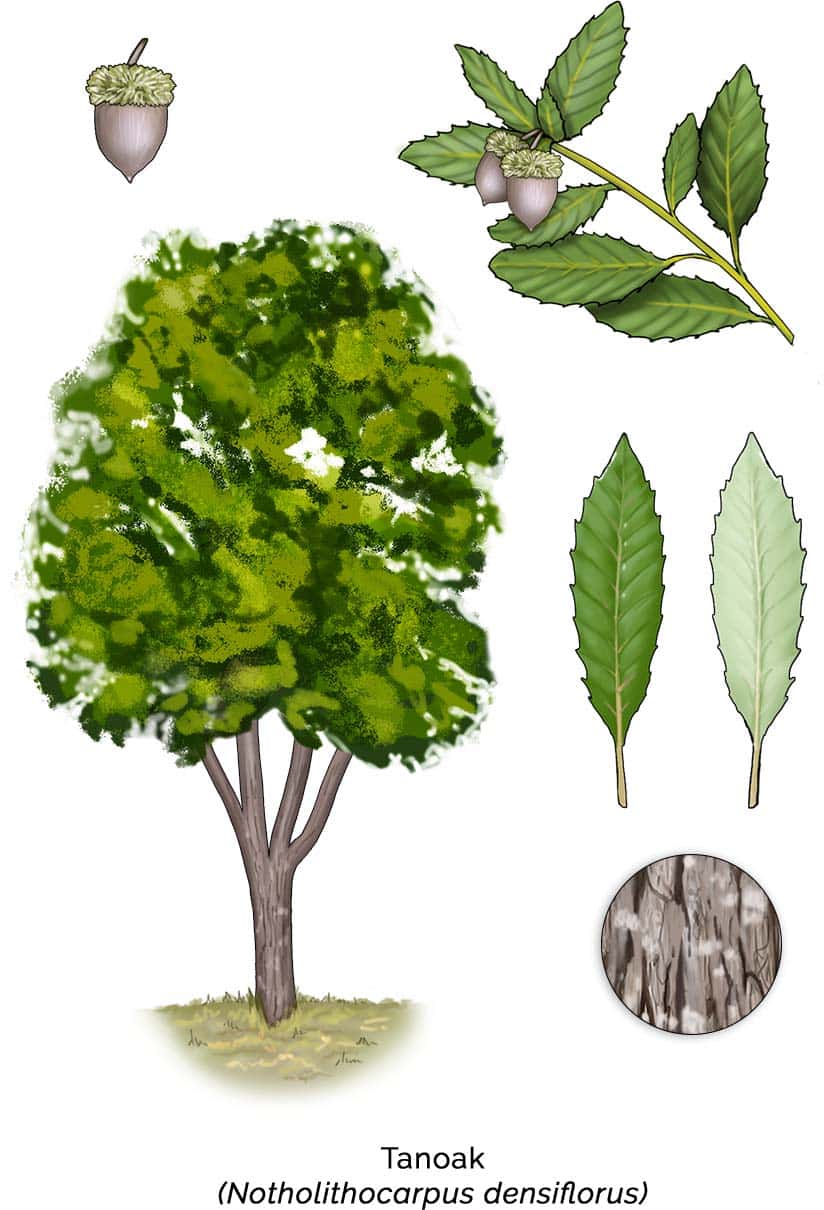
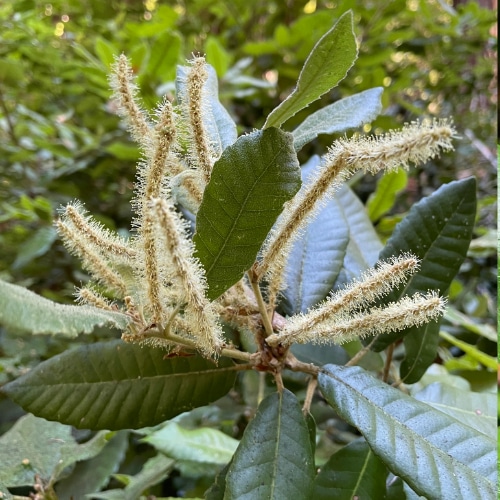
Flower
- Cream colored
- Grows upwards
- Pollen bearing
- Musty odor

Fruit
- Resembles an acorn
- Spikey top
- 1 inch long
- Bitter taste
Did you know?
Tanoaks were so heavily harvested in the early twentieth century for their tannin- a product used for tanning leather- that it became a concern that they would go extinct!

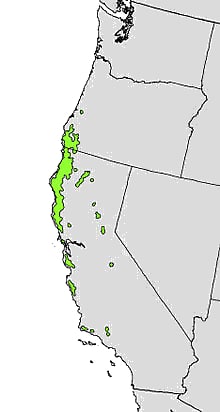
Where are the Tanoaks?
Public Domain: US Geological Survey
Mushrooms Found With Tanoaks
Amanita vernicoccora

Boletus regineus

Cortinarius
Cortinarius albofragrans
Cortinarius calyptratus
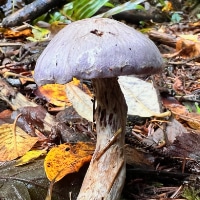
Craterellus calicornucopioide

Hohenbuehelia mastrucata
Lactarius argillaceifolius
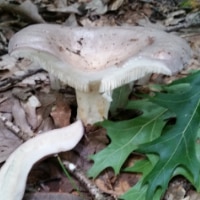
Pluteus exilis

Russula cyanoxantha
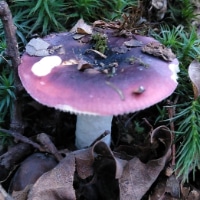
Sarcodon fuscoindicus

Tricholoma
Tricholoma murrillianum
Tricholoma pardinum

Xerocomellus mendocinensis
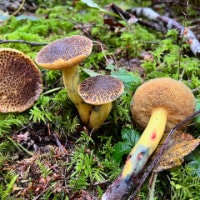
Popular Pages
Boletes
A selection of Pacific Northwest boletes
Mycoheterotrophs
Plants that depend on fungi for food
Poisonous Mushrooms
Many edible mushrooms can be poisonous, and many poisonous mushrooms can be edible.
Trees
Learn where to find, and how to identify the most common trees in the Pacific Northwest
